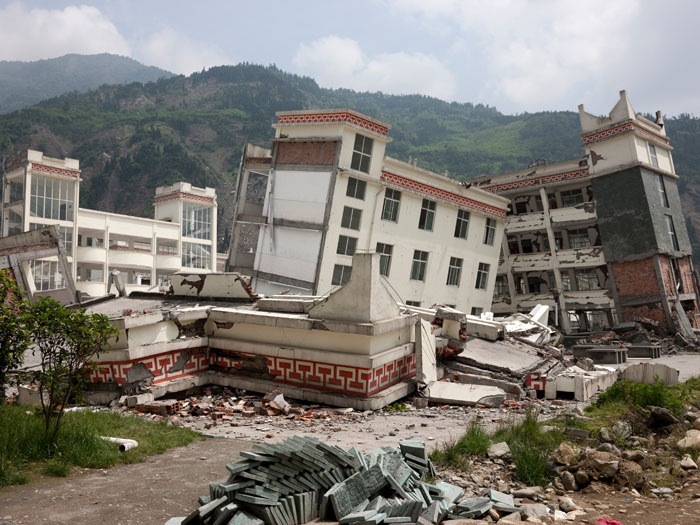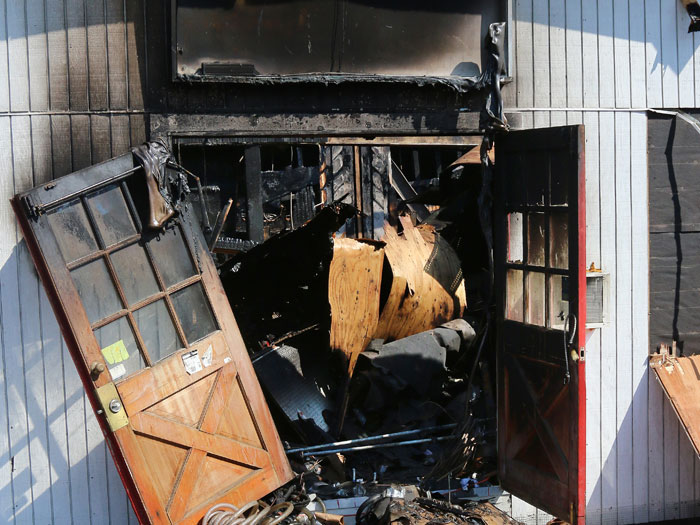Sponsored: Berkshire Hathaway Specialty Insurance
Why Marine Underwriters Should Master Modeling

Better understanding risk requires better exposure data and rigorous application of science and engineering. In addition, catastrophe models have grown in sophistication and become widely utilized by property insurers to assess the potential losses after a major event. Location level modeling also plays a role in helping both underwriters and buyers gain a better understanding of their exposure and sense of preparedness for the worst-case scenario. Yet, many underwriters in the marine sector don’t employ effective models.
“To improve underwriting and better serve customers, we have to ask ourselves if the knowledge around location level modeling is where it needs to be in the marine market space. We as an industry have progress to make,” said John Evans, Head of U.S. Marine, Berkshire Hathaway Specialty Insurance.
CAT Modeling Limitations
The primary reason marine underwriters forgo location level models is because marine risk often fluctuates, making it difficult to develop models that most accurately reflect a project or a location’s true exposure.
Take for example builder’s risk, an inland marine static risk whose value changes throughout the life of the project. The value of a building will increase as it nears completion, so its risk profile will evolve as work progresses. In property underwriting, sophisticated models are developed more easily because the values are fixed.
“If you know your building is worth $10 million today, you have a firm baseline to work with,” Evans said. The best way to effectively model builder’s risk, on the other hand, may be to take the worst-case scenario — or when the project is about 99 percent complete and at peak value (although this can overstate the catastrophe exposure early in the project’s lifecycle).
Warehouse storage also poses modeling challenges for similar reasons. For example, the value of stored goods can fluctuate substantially depending on the time of year. Toys and electronics shipped into the U.S. during August and September in preparation for the holiday season, for example, will decrease drastically in value come February and March. So do you model based on the average value or peak value?
“In order to produce useful models of these risks, underwriters need to ask additional questions and gather as much detail about the insured’s location and operations as possible,” Evans said. “That is necessary to determine when exposure is greatest and how large the impact of a catastrophe could be. Improved exposure data is critical.”
To assess warehouse legal liability exposure, this means finding out not only the fluctuations in the values, but what type of goods are being stored, how they’re being stored, whether the warehouse is built to local standards for wind, earthquake and flood, and whether or not the warehouse owner has implemented any other risk mitigation measures, such as alarm or sprinkler systems.
“Since most models treat all warehouses equally, even if a location doesn’t model well initially, specific measures taken to protect stored goods from damage could yield a substantially different expected loss, which then translates into a very different premium,” Evans said.
Market Impact
That extra information gathering requires additional time but the effort is worth it in the long run.
“Better understanding of an exposure is key to strong underwriting — and strong underwriting is key to longevity and stability in the marketplace,” Evans said.
“If a risk is not properly understood and priced, a customer can find themselves non-renewed after a catastrophe results in major losses — or be paying two or three times their original premium,” he said. Brokers have the job of educating clients about the long-term viability of their relationship with their carrier, and the value of thorough underwriting assessment.

The Model to Follow
So the question becomes: How can insurers begin to elevate location level modeling in the marine space? By taking a cue from their property counterparts and better understanding the exposure using better data, science and engineering.
For stored goods coverage, the process starts with an overview of each site’s risk based on location, the construction of the warehouse, and the type of contents stored. After analyzing a location, underwriters ascertain its average values and maximum values, which can be used to create a preliminary model. That model’s output may indicate where additional location specific information could fill in the blanks and produce a more site-specific model.
“We look at factors like the existence of a catastrophe plan, and the damage-ability of both the warehouse and the contents stored inside it,” Evans said. “This is where the expertise of our engineering team comes into play. They can get a much clearer idea of how certain structures and products will stand up to different forces.”
From there, engineers may develop a proprietary model that fits those specific details. The results may determine the exposure to be lower than originally believed — or buyers could potentially end up with higher pricing if the new model shows their risk to be greater. On the other hand, it may also alert the insured that higher limits may be required to better suit their true exposure to catastrophe losses.
Then when the worst does happen, insureds can rest assured that their carrier not only has the capacity to cover the loss, but the ability to both manage the volatility caused by the event and be in a position to offer reasonable terms when renewal rolls around.
For more information about Berkshire Hathaway Specialty Insurance’s Marine services, visit https://bhspecialty.com/us-products/us-marine/.
Berkshire Hathaway Specialty Insurance (www.bhspecialty.com) provides commercial property, casualty, healthcare professional liability, executive and professional lines, surety, travel, programs, medical stop loss and homeowners insurance. The actual and final terms of coverage for all product lines may vary. It underwrites on the paper of Berkshire Hathaway’s National Indemnity group of insurance companies, which hold financial strength ratings of A++ from AM Best and AA+ from Standard & Poor’s. Based in Boston, Berkshire Hathaway Specialty Insurance has offices in Atlanta, Boston, Chicago, Houston, Los Angeles, New York, San Francisco, San Ramon, Stevens Point, Auckland, Brisbane, Hong Kong, Melbourne, Singapore, Sydney and Toronto. For more information, contact [email protected].
The information contained herein is for general informational purposes only and does not constitute an offer to sell or a solicitation of an offer to buy any product or service. Any description set forth herein does not include all policy terms, conditions and exclusions. Please refer to the actual policy for complete details of coverage and exclusions.
This article was produced by the R&I Brand Studio, a unit of the advertising department of Risk & Insurance, in collaboration with Berkshire Hathaway Specialty Insurance. The editorial staff of Risk & Insurance had no role in its preparation.










